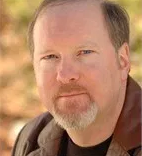Hold Your Fire
I can smell smoke. And it reminds me too much of this time last year.
In 2012, the Colorado Springs area was devastated by the Waldo Canyon Fire, which started in a canyon far south of here, but raced along the ridge top in high winds, causing major evacuations and incredible destruction. It was the worst fire in Colorado history. But all records are made to be broken.
A week ago, I had a free day to go out hiking, and I explored a beautiful area in canyons around Cheyenne Mountain to the south of Colorado Springs, a quick drive for me, but new trails. I am under a tight deadline to write a new humorous fantasy novel, THE DRAGON BUSINESS. I needed time on the trail to dictate chapter after chapter, and nice winding trails are best for that. The scenery was spectacular, much like the Black Hills of South Dakota, and I took quite a few photos. I also managed to finish four chapters—a great writing day. As I reached an overlook at the summit of Grayback Peak in mid-afternoon, I could really smell smoke in the air, and a haze hung over the views, getting thicker. This is fire season, and blazes happen frequently.
When I drove out of the dirt roads and wound back down from the mountain, I reached the interstate, I headed north (unfortunately timed to hit afternoon rush-hour traffic)—and the traffic was worse because of the gigantic cloud of smoke roiling north of Colorado Springs. Near where I lived. The area called Black Forest, rolling hills covered with a lot of trees, large houses on large lots was on fire.
I got home, and Rebecca was listening to the news. She had intended to spend the day editing; she’s under a crunch deadline, too, to finish the line-by-line polishing of THE DARK BETWEEN THE STARS, with 830 pages to get through. But she made little progress with the news flashes of how swiftly the fire was spreading. Black Forest was immediately evacuated—so swiftly that people couldn’t even get home from work in time to grab a few possessions and their pets. They were blocked from access as their houses burned.
By the next morning, firefighters were coming in from all over the state; air operations took over with constant flights dumping water and retardant on the flames. Evacuation zones were expanded. And the weather proved particularly malicious—several days in a row with very high temperatures and very high winds. Our house was five or six miles from the core of the fire, which seemed like a long distance, except that 30 mph winds were blowing directly toward us. From our house, we could see the smoke rising.
The fire continued to spread, despite increasingly desperate firefighting measures. The morning briefing listed the acreage burned at 8000 acres the first day, then up to 15,000 by the next day. 90 homes were destroyed, burned to the ground. The following day, the number went over 300. Two people were found dead, burned in their garage, still frantically packing up their car as the fire swept over their house. The evacuation zones were expanded, with additional pre-evac zones designated—in which homeowners might have less than an hour to get out of their house. We were a mile away from the edge of the zone.
Rebecca and I started preparing. We decided we would move our three cats out the following day, where they would stay with Jonathan and Jessica, the two grandsons, and their cousin-kitties. That night, at 11:30 PM, we went to Wal-Mart to buy the very last cat carrier in the store. The parking lot was surreal, a makeshift campground as evacuees who had their own RVs parked their, waiting news about when they could go back home.
After delivering the cats (who didn’t like the smell of smoke in the air, but did not approve of the evacuation either), Rebecca and I spent the day gathering up papers and documents, taking down the valuable artwork from the walls, then packing up copies of the books we’ve written. Just ONE copy of each edition of my books filled an entire SUV. We had already made plans to stay with my friend and coauthor Doug Beason (ILL WIND, ASSEMBLERS OF INFINITY), who lives about twenty miles north.
The wind was a little calmer, the weather cooperating. The firefighters managed to hold the line, and on the following day we even had a little rain. Then more rain and cloud cover the day after. And we could finally breathe a sigh of relief. In his daily briefing the sheriff announced the fire was 5% contained, then 30% contained, 45%, 75%. There were other fires burning in the state, too—particularly one that damaged many of the facilities around the spectacular Royal Gorge Bridge, a popular tourist attraction.
We brought the relieved cats back home and spent a day de-vacuating, re-hanging the artwork, re-filing the files, and unpacking and organizing all the contributor copies of our books. Needless to say, neither Rebecca nor I got much writing or editing done for the entire week.
All told, the fire burned more than 15,000 acres, completely destroyed over 500 homes. 38,000 people were evacuated; two people died. The worst fire in Colorado history…but I’ve heard that before.










You must be logged in to post a comment.